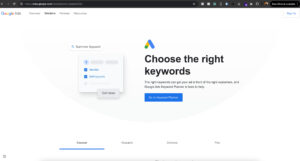Responsive Web Design

Stepholt
News, Tips & Tricks
Responsive Web Design is one example of approaching design with a user-first mindset, aiming to render pages cleanly & effectively across the full spectrum of internet-capable devices, and adapting page layouts & features to fit with the viewing environment it is being accessed from, using certain technologies, like:
1)Proportion-Based Grids: Using a Viewport percentage, you take up a designated amount of the viewing environment with an aspect, rather than a specific pixel amount, allowing for better compatibility across all screen sizes.
2) Flexible Images: Fluid/Flexible Images, is as simple as a {max width: 100%} inside a block – it tells the image there is a physical limit to the space it can take up, without cutting off the image in modern browsers – which for the most part allow for automatic rescaling of fixed-width entities, like images.
3)Media Queries: CSS allows you to affect the styling of your content, and media queries are an excellent way to control universal styling aspects, with breakpoints for specific pixel sizes for screens (less straightforward in the modern-day, but 10 years ago where the lines between iPhones, iPads, and iMacs were a little less blurred for size, you get the idea. With a media query you determine how something looks and what it displays, depending on the size of the viewport it’s being rendered on. This then allows you to affect sizes, shapes, and displays to ensure a smooth user experience across all devices, and happier users are more likely to come back.
When you design & develop through Responsive Web Design & its best practices, you focus on the User Experience, and how the User Interacts, and then your focus shifts from just looking at functionality, and whether it works, into “how does my user feel when coming across this page?” “What do my eyes focus on?” “What do I see first? Second? Third?” This is your user journey – what they see, where they look, what draws their eyes mostly on the page, and whether the information they would be looking for is easily accessible. If your user clicks onto a page expecting a quick & easy resolution, then burying it may cause them not to trust you or your site when they come across a link bearing your name again. This could discourage the use of your site causing traffic to drop, which may become detrimental to your business. For more help with Responsive Web Design, Development, Shopify, WordPress or anything and everything else on the Web, Click Here and we’ll get in touch to give you a hand!
Related Posts
Ready to get started?
with over 20 years in the industry our designs, coding, and marketing services a future-proof.
Feel free to contact us today for a free site audit or to discuss your next project

